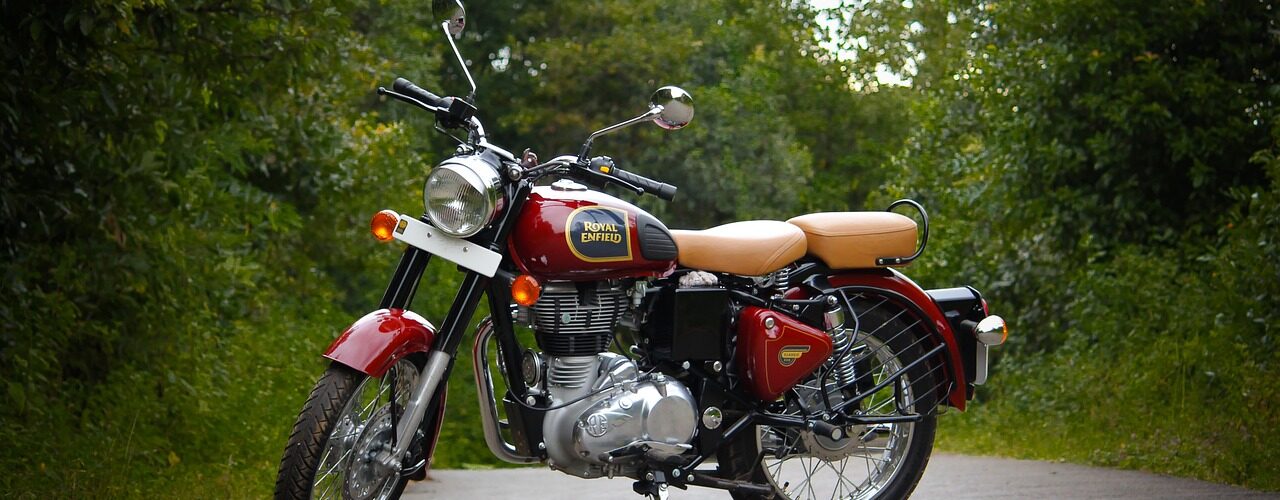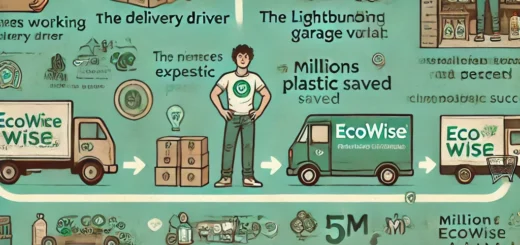Royal Enfield: From Survival to Iconic Legacy
Published · Updated

If you want thrill in life ,only a long ride on Royal Enfield can give you. Royal Enfield is a name everyone knows for ride on rugged roads, classic design, and the thrill of motorcycling. But this iconic brand didn’t always enjoy the cult status it has today. Its journey from a struggling company to a global phenomenon is a story of resilience, innovation, and a deep understanding of its audience.
Humble Beginnings in England
Royal Enfield’s roots trace back to 1901 in Redditch, England, where it began producing motorcycles under the slogan, “Made Like a Gun.” Its sturdy and reliable bikes quickly gained a reputation, making the brand a favorite among military and police forces during World Wars.
One of its most famous models, the Bullet, was first produced in 1932, becoming a symbol of durability. However, after World War II, the brand faced stiff competition and struggled to keep up with changing market dynamics.
The Indian Connection
In 1955, Royal Enfield partnered with an Indian company, Madras Motors, to assemble motorcycles in India. The Indian Army became one of its largest customers, favoring the 350cc Bullet for its reliability on rugged terrain. By the 1960s, production had shifted entirely to India.
A Decline and a Near Collapse
Despite its early success, Royal Enfield faced declining sales in the 1970s and 80s. The rise of cheaper, fuel-efficient motorcycles from Japanese brands like Honda and Yamaha made it hard for the bulky, fuel-guzzling Royal Enfields to compete.
By the early 1990s, the company was on the verge of closure. Production facilities were outdated, demand was plummeting, and the brand seemed like a relic of the past.
The Turnaround: Eicher Motors Steps In
In 1994, Eicher Motors, a relatively small tractor and commercial vehicle manufacturer in India, acquired Royal Enfield. At the time, it seemed like an odd pairing, but Siddhartha Lal, a visionary young leader from the Lal family, would turn things around.
When Siddhartha became the CEO of Eicher Motors in 2000, he took a bold step: focus entirely on Royal Enfield. He downsized Eicher’s other businesses and poured resources into modernizing the motorcycle brand.
What Changed Under Siddhartha Lal?
-
- Modern Engineering Meets Classic Design: Lal kept the iconic look of Royal Enfield bikes but introduced modern engineering to improve performance and reliability.
-
- New Models: The introduction of models like the Classic 350, Himalayan, and Interceptor 650 appealed to both nostalgia-driven enthusiasts and younger riders.
-
- Global Expansion: Royal Enfield began exporting motorcycles to Europe, North America, and Southeast Asia, positioning itself as a global brand.
-
- Community Building: Events like Rider Mania and long-distance rides created a lifestyle around the brand, turning customers into loyal fans.
Royal Enfield: A Global Phenomenon
Today, Royal Enfield is the world’s oldest motorcycle brand in continuous production, and it has transformed into a global powerhouse. The Classic 350 remains one of its best-selling models, offering a perfect blend of retro styling and modern performance.
Stock Market Performance
Eicher Motors, Royal Enfield’s parent company, has seen phenomenal growth:
-
- 1994: When Eicher Motors acquired Royal Enfield, its share price was barely making waves.
-
- 2014-2018: During this period, Eicher’s stock skyrocketed, thanks to Royal Enfield’s surging popularity. At its peak, the stock price hit around ₹32,000 (Indian Rupees) per share, making it one of the most valuable auto stocks in India.
-
- 2020 Onwards: Although the COVID-19 pandemic affected sales briefly, Royal Enfield has rebounded strongly, maintaining its position as a market leader.
As of November 2024, Eicher Motors trades at a strong price, reflecting investor confidence in Royal Enfield’s enduring appeal and innovation.
The Key to Royal Enfield’s Success
-
- Timeless Design: The brand’s classic aesthetic continues to attract riders who value style and tradition.
-
- Cult Following: Royal Enfield isn’t just a motorcycle; it’s a lifestyle. Riders form communities, embark on adventures, and celebrate the brand’s legacy.
-
- Focus on Mid-Size Segment: Royal Enfield dominates the 250cc-750cc motorcycle category, a niche often overlooked by competitors.
-
- Expansion into Electric: The company has also begun exploring electric motorcycles to cater to the future of mobility.
What’s Next for Royal Enfield?
Royal Enfield continues to expand globally, with new showrooms and assembly plants opening across Asia, Europe, and Latin America. It’s also heavily investing in electric motorcycles, aiming to keep its classic charm intact while adapting to eco-friendly trends.
With a 100+ year legacy and an ever-growing fan base, Royal Enfield stands as a testament to the power of reinvention. From the brink of collapse to becoming an aspirational brand, its journey inspires entrepreneurs worldwide.
Final Thoughts
Royal Enfield is more than just a motorcycle brand; it’s a symbol of enduring resilience and adaptability. For entrepreneurs, its story offers a powerful lesson: sometimes, focusing on your strengths, embracing your heritage, and listening to your audience can turn challenges into opportunities.
Whether you’re a rider or a dreamer, Royal Enfield reminds us that every journey has its bumps—and its triumphs.







